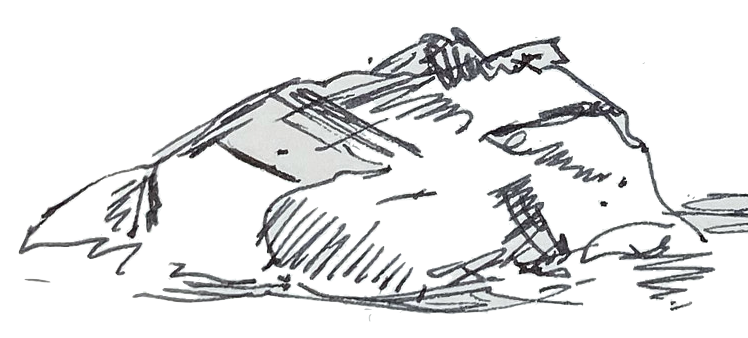And thereby hangs a tale
It’s been uncharacteristically cold for April this year around here. So much for Global Warming. We are still wearing coats, and reciting, “ne’er cast a clout till the May is out”, which refers to the blossom on the hawthorn, not the month, of course.
Thinking about the last post (no, not the “Last Post”), in particular the memory of my school days that produced the reference to “Lord of all Hopefulness”, I was triggered to recall another assembly hymn, “Onward Christian Soldiers, marching as to war”. It has always been obvious to me that the hymn calls on us to walk relentlessly on to living a better Christian life analogous to the vigour of soldiers in pursuit of military victory, but recently I have been aware of voices threatened by the rise of right-wing Christian intolerance, misquoting the hymn as “marching on to war”. That injustice has long been repaid quid pro quo by the Western media misunderstanding of جهاد (jihad). Marching “as to war” to live the better life and what Sufis call the greater jihad الجهاد الأكبر (al jihad al-akbar) or personal struggle to live a better spiritual and moral life are pretty much one and the same in meaning and misunderstanding. With the power of repetition and amplification of social media, misrepresentation can cause significant shifts in perception and lead to great injustice and suffering.
This power in the use and abuse of language is not new, of course, and we can’t lay all of the blame at the feet of media platforms, social or otherwise. In 1959, the physician Richard Asher scolded the medical profession for its abuse of words, in particular the incorrect use of medical terms, because of the effect this had on the meaning of the term itself in repeated usage over time.
“Once a word has been mishandled consistently, it is useless for scholars to try to preserve its correct meaning. Like a bolt screwed into the wrong socket, it forces a place for itself and at the same time spoils the thread of the seating so that the correct fitting will no longer go in properly.”
Walter Freeman asserted that neurobiologically, brains have no internal representations, but they do create meaning from information received by the body. We make meaning using signs, symbols and words according to that which we have already learned about the world and without education or guidance, can only interpret those of others in the same way. Pierre Bourdieu’s embodied cultural capital describes our diversity in terms of the advantages greater “capital” brings. This can be characterised by old-school teachers who might tell you that those who read more have more extensive vocabulary and grant themselves access to a better education as a result. We each may see things differently according to our various social and cultural capitals.
Claude Shannon defined the elements of communication which included that whilst messages may carry meaning, the information sent and received by communicators does not. Meaning, according to Freeman, is constituted in the brain by activity patterns which “express the entire history and experience of an individual.” In machine learning, this experience is called the percept sequence (Russell and Norvig, 2009, 34). Within generative language tools like chatGPT, that percept sequence influences and defines how the machine uses language to express answers to questions posed. Within the context of social communication, Freeman speaks of brains constructing external representations such as books, paintings and music as their means for expressing their internal states of meaning. They do this “with the intent to elicit meaning in other brains” but without these objects themselves containing any meaning.
Irrespective of the intent, the meaning elicited is not within the control of the brain who constructs the message. It is entirely made by the percept sequence of the brain that perceives it.
Prompts for further reflection:
It is impossible to give offence. Offence can only be taken.
You are in a shopping centre and hear a passer-by whisper, “Allahu Akbar!” What should you do?
My pronouns are he/him.

